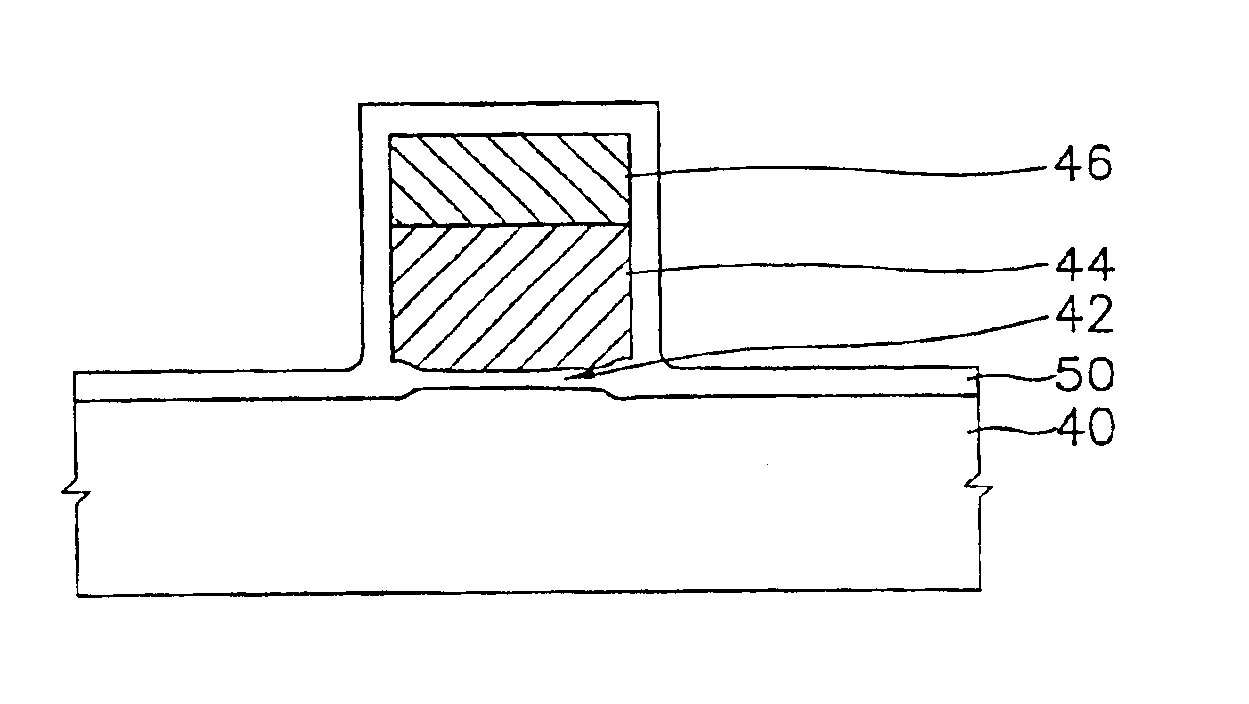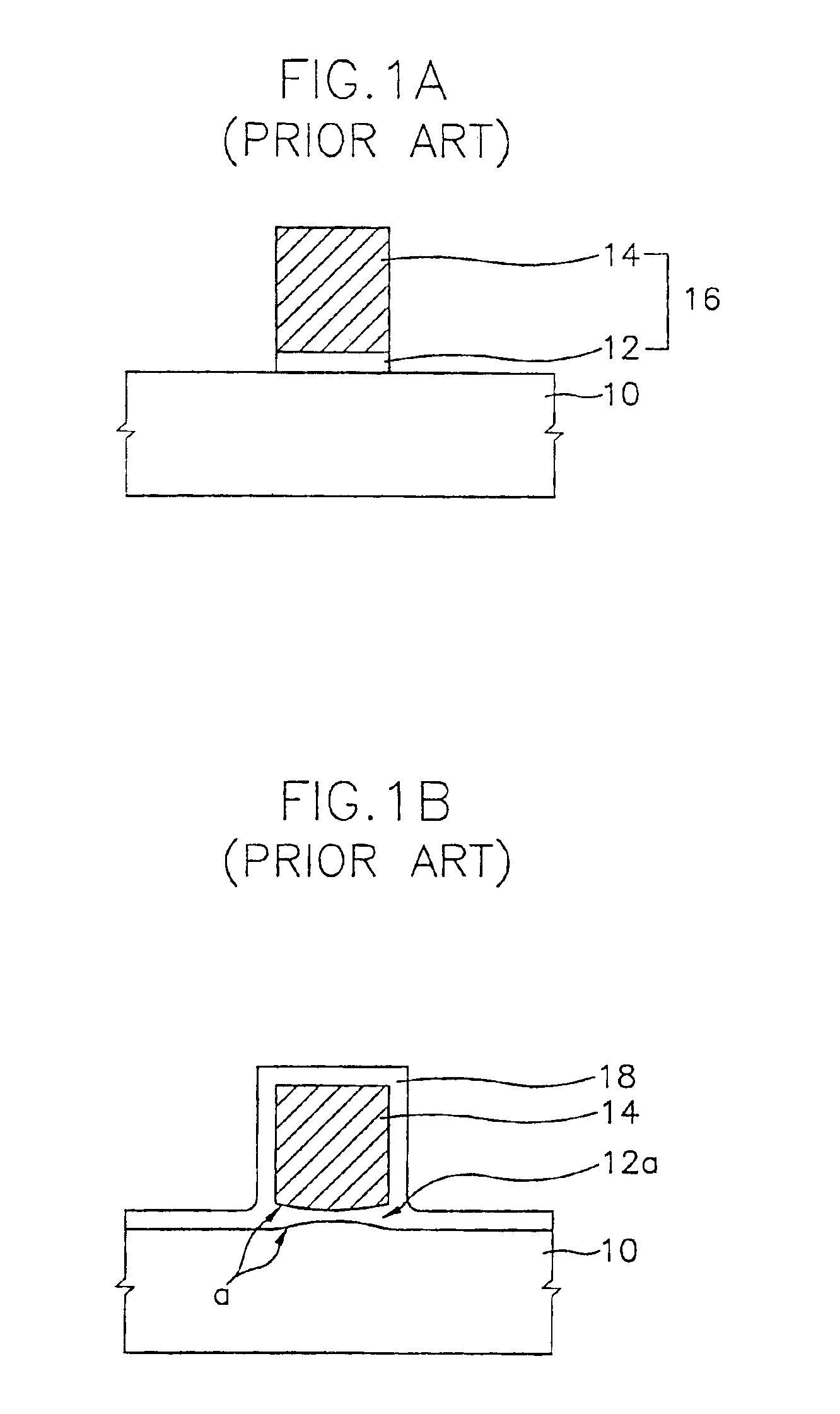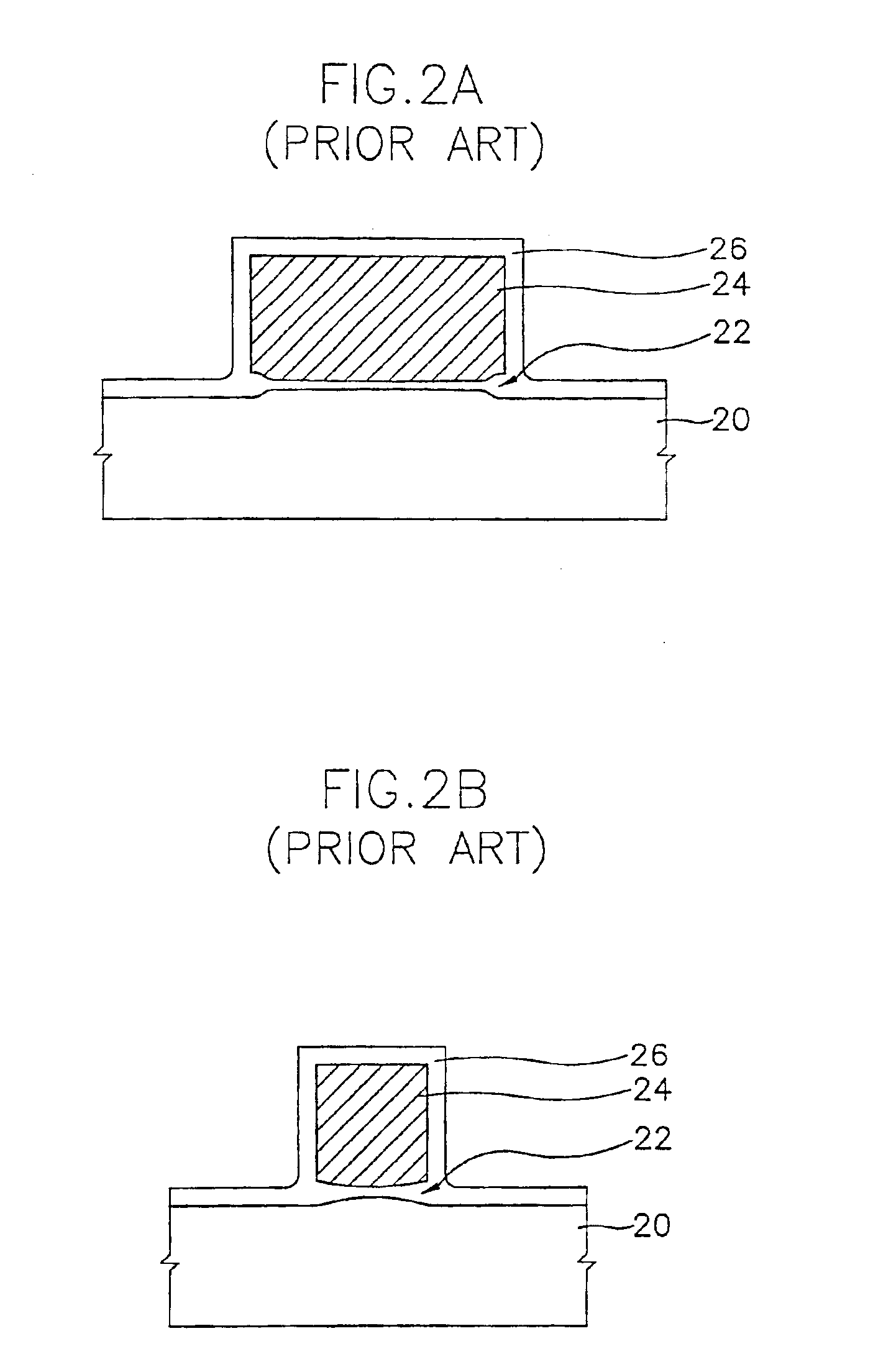Method for forming a gate electrode in a semiconductor device including re-oxidation for restraining the thickness of the gate oxide
a technology of gate electrode and semiconductor device, which is applied in the direction of semiconductor devices, basic electric elements, electrical appliances, etc., can solve the problems of relatively slow data processing time for ram devices, such as input and/or output of data, and generally very fast data processing time for rom devices, so as to reduce the thickness difference of the gate oxide layer pattern in each gate electrode and restrain the thickness of the gate oxide layer pattern
- Summary
- Abstract
- Description
- Claims
- Application Information
AI Technical Summary
Benefits of technology
Problems solved by technology
Method used
Image
Examples
Embodiment Construction
[0019]Disclosed is a method for forming a gate electrode, capable of restraining a thickness of a gate oxide layer pattern from being increased when a re-oxidation process is carried out for forming the gate electrode. A preliminary gate electrode including a gate oxide layer pattern and a conductive layer pattern stacked on the gate oxide layer pattern is formed on a semiconductor substrate. A re-oxidation process is performed for forming the gate electrode by forming an oxide layer on an outer surface of the preliminary gate electrode and on the semiconductor substrate with supplying an oxygen gas and a chlorine-including gas into a reactor while restraining a thickness of the gate oxide layer pattern from being increased. Thus, the chlorine-including gas can reduce a length of a Bird's Beak, as known in the art, that occurs when the re-oxidation process is carried out, so a thickness of the gate electrode is retrained from being increased.
[0020]FIGS. 1A and 1B are sectional views...
PUM
 Login to View More
Login to View More Abstract
Description
Claims
Application Information
 Login to View More
Login to View More - R&D
- Intellectual Property
- Life Sciences
- Materials
- Tech Scout
- Unparalleled Data Quality
- Higher Quality Content
- 60% Fewer Hallucinations
Browse by: Latest US Patents, China's latest patents, Technical Efficacy Thesaurus, Application Domain, Technology Topic, Popular Technical Reports.
© 2025 PatSnap. All rights reserved.Legal|Privacy policy|Modern Slavery Act Transparency Statement|Sitemap|About US| Contact US: help@patsnap.com



